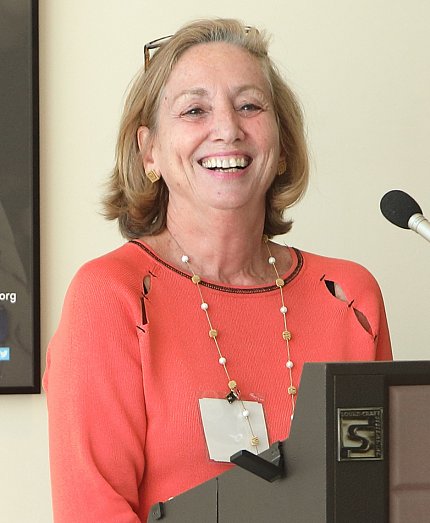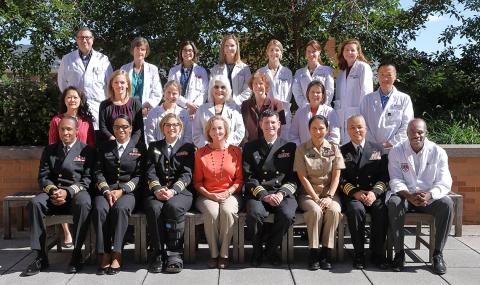NIH Celebrates PA Week

Photo: Chia-Chi Charlie Chang
A patient’s first encounter with a physician assistant (PA) might be met with skepticism. Who is this “assistant” examining me? Where’s the doctor?
There are more than 123,000 PAs working across the country in every medical field from pediatrics to internal medicine to surgery. They conduct physical exams, record medical histories, order and interpret lab results and prescribe medications.
PA education is a graduate-level program completed after an undergraduate degree that must prepare students for higher level basic and medical science courses. After graduation, all PAs must pass a rigorous national certification exam that is required for licensing at the state level. There are more than 230 accredited PA programs nationwide.
At NIH, there are some 45 PAs working in clinical research, providing medical care for patients on various protocols. Some of them took a quick break from their busy day to attend NIH’s annual PA Week celebration held Oct. 12 in the Clinical Center’s southeast patio room.
A year ago, Rep. Karen Bass (D-CA), the one PA in Congress, introduced legislation designating Oct. 6-12 as National PA Week. Capt. Josef Rivero, a PHS officer and NHLBI associate investigator who led the group effort to get the legislation sponsored, read aloud the PA proclamation, which raises awareness and appreciation for the profession.
Keynote speaker Dr. Lisa Alexander noted the exponential growth of the field. She was excited to learn from a colleague recently that Brigham and Women’s Hospital in Boston, for example, has a robust workforce but is still interested in recruiting more PAs. “In my lifetime, I never thought a hospital would be looking to fill 60 positions for PAs at one time,” said Alexander, professor at George Washington University and president, Physician Assistant Education Association.
The profession has historically been linked to the military, with many veterans seeking to expand their service training to become PAs. During the last 15 years, changes in the demographics of incoming students have taken place, including more women. These changes are not unique to the PA field, where many see flexibility and work-life balance as attractive features of the career.
“What I look for in an applicant is someone who’s had some life experience and can multi-task,” said Alexander, who is also a PA, clinician and researcher. “There haven’t been any studies demonstrating that clinical experience is a predictor of success; however it makes the student, I think, a much more sought-after commodity in the sense that they have exposure to patients who are at their most vulnerable or they may have a working knowledge of the vernacular that we use in medicine that sometimes we try to teach but you can’t get unless you’re embedded in the system.”

Photo: Chia-Chi Charlie Chang
The younger PAs might not remember the advocacy efforts that helped the profession progress to where it is today, said Alexander. In the early years, after the field was established in 1967, the American Academy of PAs (AAPA) played a critical role in recognizing and advancing the profession, including lobbying for prescription-writing privileges.
Today, the AAPA is working to modernize the state laws that govern PA practice by advocating for policy that removes administrative barriers to hiring PAs. In many states, laws that govern PA practice include stipulations related to physician supervision, which requires additional paperwork and burdens that can delay the licensure and hiring process.
“We’re not looking for independent practice,” said Alexander. “We’re just looking to reduce the administrative burdens that can negatively impact effective utilization of PAs.”
With physician shortages still predicted by various workforce experts, a strong PA workforce will be needed to collaborate with physicians to effectively care for the ever-growing number of patients seeking care, she added.
“We look at patient care as a team effort and with that messaging I think we stand to preserve the profession we so dearly love.”
